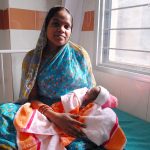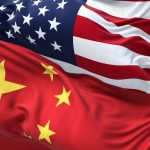The COVID-19 pandemic has brought about some unexpected outcomes, none more striking than the fact that developing countries have seemingly fared well against the virus, while incredibly wealthy countries, like the United States have sometimes done poorly. What explains this counterintuitive variation in health outcomes?
I argue that while the relative strength of state capacity and regulatory compliance is an important determinant of COVID-19 outcomes, the politicization of facts and science can dramatically decrease both factors and explain why some resource-rich states have not fared as well as “poorer” states in containing the virus. Nuances are in order: “State capacity” cannot be assessed solely by economic, technological or other quantitative metrics; as in most dimensions of public life, politics and political priorities shape the way resources are developed and applied. And assessing degrees of “regulatory compliance” depends on the questions: what is being regulated, and how are state regulations perceived by the public?
Priorities tell the tale.
Measuring state capacity
Many experts associate state capacity with a strong bureaucracy and with the state’s ability to use force to accomplish its goals. By this measure, the US state is quite capable. In contrast, few consider South Sudan to have similar state capacity. As of July 16, however, South Sudan, with a population of nearly 11 million, had recorded only 41 SARS-CoV-2 deaths (4 per million residents). The US, meanwhile, had recorded over 140,000 deaths (426 per million residents). At first blush, then, it would seem that state capacity is not a defining variable in terms of limiting the spread of SARS-CoV-2.
A closer look, however, suggests that raw state capacity can be augmented by the choices governments make and the priorities they establish. No state, however wealthy, commands the resources to regulate every dimension of public life. In battling the pandemic, even the most coercively capable state can run into difficulties with regulatory compliance if public health issues are politicized.
The capacity to launch a successful military campaign in a foreign country, for example, requires a highly specialized set of skills and equipment. The US certainly has this type of capacity and devotes a substantial portion of its GDP to maintaining it. It does not devote similar attention or resources to public health, however, though both capacities could be considered important to the defense of its citizenry. It is here that many developing countries, in part because they have less well-developed medical systems, have made different choices. As noted in Jina Moore’s New Yorker piece on this topic, South Sudan is certainly one of them. Nearby Ebola outbreaks have forced the small, impoverished and war-torn country to focus its meager public health resources on the prevention and mitigation of disease.
What has changed is the executive and his decision to politicize scientific data and basic facts about the virus.
While the US and many European countries were just waking up to the coronavirus threat, South Sudan was already screening passengers at its ports of entry and quickly turned to blocking incoming flights well before its first in-country case in early April. Viewed through this lens, South Sudan meaningfully directed its limited state capacity towards protecting its population from the COVID-19 threat, while the US, despite the institutional capital housed in the CDC, has had more difficulty doing the same. Why?
Under the Obama administration, the CDC played a lead role in containing the 2014 Ebola outbreak, so we know the CDC is a capable institution. While the agency has suffered recently from stagnant funding and staff cuts, neither of these should have proven devastating, as they were both relatively marginal. (That said, CDC staff in China has been more than halved. What has changed is the executive and his decision to politicize scientific data and basic facts about the virus.
Science and politics collide
This new orientation of the executive branch matters because the CDC has limited enforcement capability. Health and human safety are local level issues in the US. Individual counties implement public health policy. Under such a decentralized institutional framework, achieving regulatory compliance is already challenging. But it is made considerably more difficult by the suggestion, at the highest levels of government, that SARS-CoV-2 either doesn’t exist or isn’t a threat.
Just last week, President Trump stated: “We have tested over 40 million people. By so doing, we show cases, ninety-nine percent of which are totally harmless. Results that no other country will show, because no other country has testing that we have—not in terms of the numbers or in terms of the quality.” This statement conflicts with clear evidence to the contrary. At present, the Case Fatality Rate for COVID-19 in the US is estimated to be 5.58 percent.
Regulatory compliance becomes difficult under these circumstances because, at the end of the day, counties have limited enforcement capacity. If a considerable portion of the populace does not believe a threat exists, as was true in the US in mid-March, or harbors other related falsehoods, they are unlikely to engage in what scholars call “voluntary compliance”—the decision to engage in compliant behavior despite recognition that the threat of enforcement and/or the penalties associated with noncompliance are low.
The politicization of masks in particular made re-openings dangerous in many locations.
In the absence of consistent and sound messaging from the top down—and from the head of state—counties cannot rely on voluntary compliance and, instead, must coerce people into compliance. Coercion, alas, is expensive; it can also be politically costly if the public believes it is unreasonable.
What counties in the US have done, by and large, is to focus on reducing the “supply” of places where individuals might interact and become infected. This was a pragmatic regulatory move. Enforcing shelter-in-place or curfew orders against individuals is onerous. Enforcement against less numerous and more visible entities like businesses and organizations is easier. If enough of this “supply” is shut down, fewer people will have reasons to leave their home, interact and become infected. While undoubtedly effective, shutting down whole economies was never going to be a long term solution. Unemployment has soared and businesses close permanently every day. Given this kind of economic wreckage, it was important for counties to loosen their restrictions and open back up (for more on this, see “Optimal economic policy during COVID-19.”
An ill-advised opening
And this is where politics comes back into play. It was politically expedient to open up for economic reasons almost everywhere, but the places that chose to proceed quickly, despite the continued public health threat, largely did so in a way that was not guided by facts and science. They were able to get away with this because of the politicization of the facts and science surrounding SARS-CoV-2. Significant portions of the public did not believe there was any threat and could not understand why politicians allowed so much economic damage to occur. They rushed out to partake in newly reopened economic life. This would have been somewhat more feasible had appropriate precautions been put into place at each business, if all individuals were required to wear masks, etc. But the politicization of masks in particular made re-openings dangerous in many locations. Voluntary mask usage was likely being blunted by this politicization.
The political about-face has probably not convinced many virus non-believers to change their minds or their ways.
With a surge in cases across much of the southern US and particularly in states where mask use was not required or even encouraged, governors and other political figures are now realizing the costs associated with politicized science. Mask requirements have become relatively common, the current battle between the governor of Georgia and the mayor of Atlanta notwithstanding. The problem from a regulatory compliance perspective, however, is that enforcement of such rules against individuals is costly, and the political about-face has probably not convinced many virus non-believers to change their minds or their ways. Unfortunately, many of these people may eventually become convinced, but in the worst way possible. Though the state may not be able to muster the coercive force necessary to make people comply out of fear, the virus, if left unchecked, can and will. When people know people who die and when their local hospitals are forced to turn patients away, rates of compliance will inevitably rise.
When facts start to hit people over the head, as they did in New York in March, science will become de-politicized and the US will suddenly seem like a much more capable state than it is right now. (President Trump made headlines recently, simply for wearing a mask in public.) But we should be careful not to ascribe too much to the state, lest it deter the US—or any other country—from investments in capacity that might prevent some future public health problem from spiraling out of control, as this one has. We should also be mindful that integral human development in the coronavirus era requires us to consider the dignity of the individual person, whose health and safety in this case depends on the availability of accurate information, expert guidance and responsible political leadership.
Susan Ostermann is assistant professor of global affairs at the University of Notre Dame’s Keough School of Global Affairs.
This article is part of a series of blog posts published by the Keough School of Global Affairs. Dignity and Development provides in-depth analysis of global challenges through the lens of integral human development.



